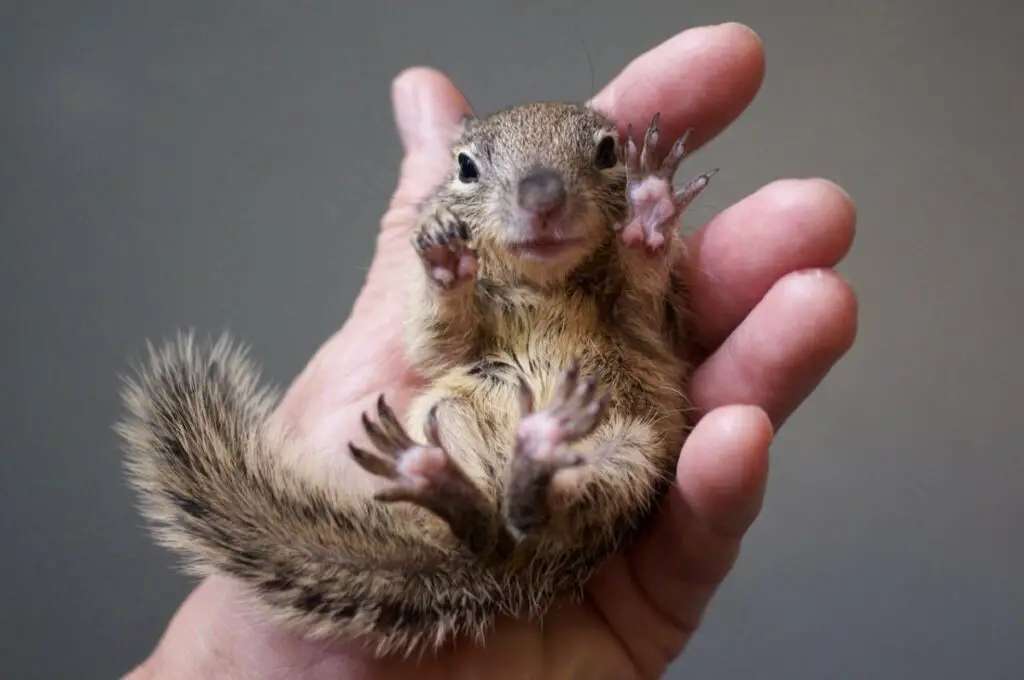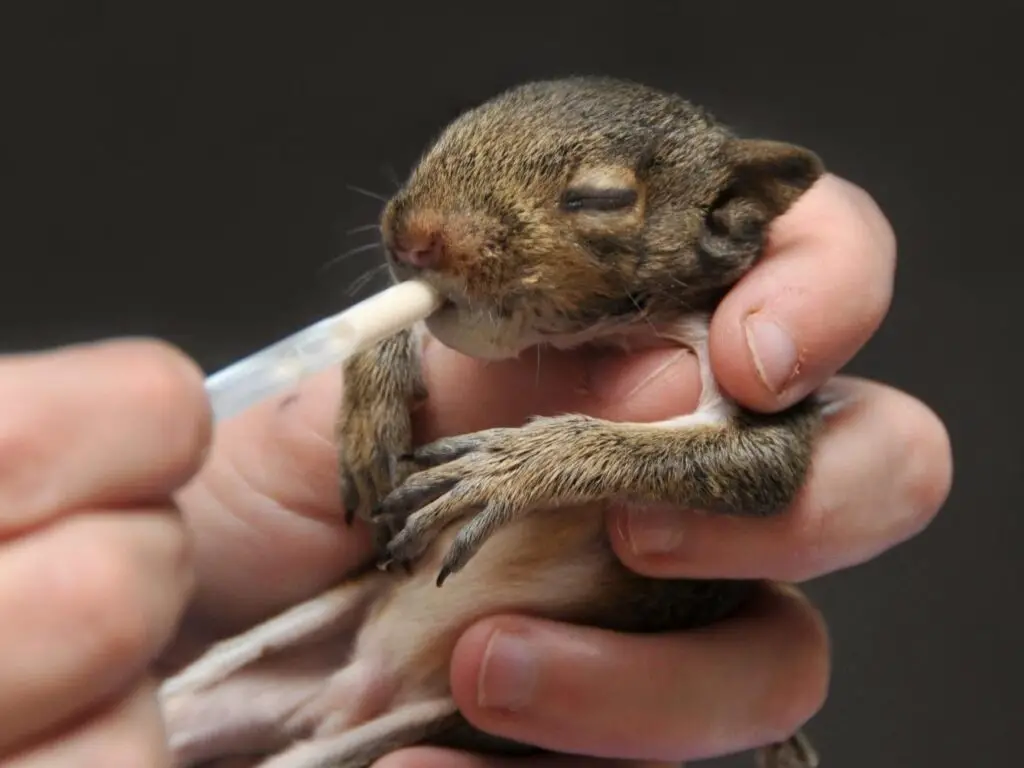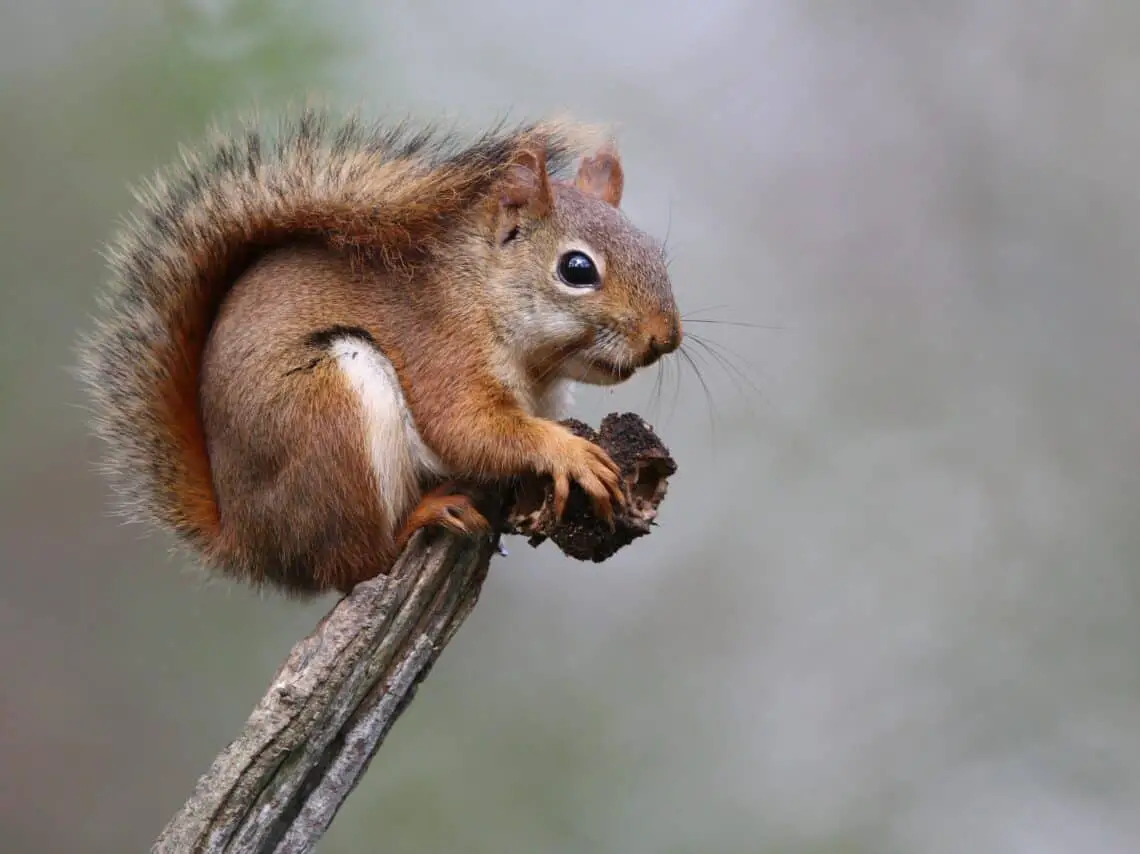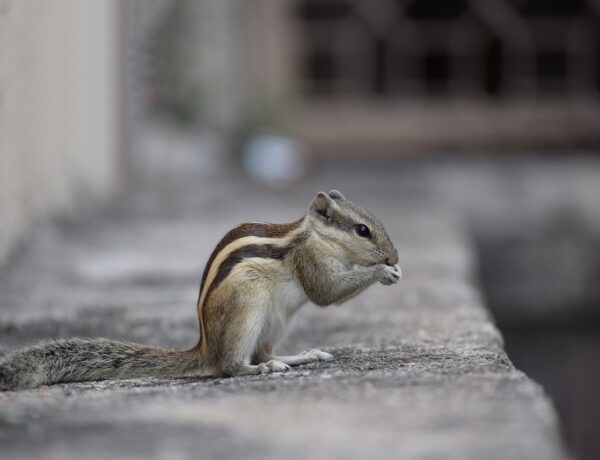Introduction
When Do Squirrels Have Babies: Squirrels, those agile and acrobatic creatures that dart through our parks and woodlands, have always fascinated and charmed nature enthusiasts and casual observers alike. Their curious antics, from dexterously leaping between branches to their voracious nut-gathering habits, make them an iconic and endearing part of the animal kingdom. Squirrels rodents, members of the Sciuridae family, come in various species, each with its own unique traits and reproductive patterns. Understanding when these charismatic rodents bring new life into the world not only deepens our appreciation for their natural history but also sheds light on the intricate web of ecological relationships they are a part of.
The timing of squirrel births is not uniform across all species or even geographic regions. It’s influenced by a complex interplay of factors such as species-specific traits, environmental conditions, and the availability of resources. From the industrious gray squirrel to the charismatic red squirrel and the speedy fox squirrel, each type has its distinct characteristics, preferences, and reproductive strategies. In squirrel reproduction, we will delve into the fascinating world of these creatures, discovering the various factors that determine when they choose to expand their families. We will explore the role of seasonal changes, food availability, and social dynamics in shaping their reproductive behaviors.
The remarkable adaptations that squirrels have developed over millennia to ensure the survival of their offspring, even in the face of formidable challenges. So, the captivating realm of squirrel parenthood, where timing is crucial, and every birth marks another chapter in the intricate tapestry of nature’s grand design. Whether you’re a seasoned naturalist or simply a curious observer of the natural world, the mysteries of when squirrels have babies are sure to captivate your imagination and deepen your understanding of these charming, elusive creatures.

How long do baby squirrels stay with their mother?
Gray squirrels nest twice a year, in late winter and summer. They commonly have litters of three or four pups. Babies’ eyes open at four weeks of age and the young are often starting to explore outside the nest at six weeks of age. They are typically weaned and ready to be on their own at 10 weeks of age.
The duration that baby squirrels spend with their mothers varies depending on the species of squirrel and the environmental conditions in which they live. Typically, baby squirrels, often referred to as kits or pups, remain with their mothers for a period ranging from several weeks to a few months.
In contrast, some squirrel species may have shorter or longer periods of maternal care. For example, flying squirrels, known for their gliding abilities, tend to have slightly longer periods of maternal care, often up to 14 weeks or more. This extended period is crucial for learning the intricate techniques of gliding and navigating through the forest canopy.
The duration of maternal care also depends on environmental factors, such as food availability and climate. In periods of abundant food, baby squirrels may wean earlier and become more independent. Conversely, during times of scarcity, mothers may continue to support for a longer duration to ensure their offspring’s survival.
How can you tell if a squirrel is pregnant?
Just like in humans, pregnancy hormones cause a squirrel’s breast tissues to grow and make the nipples protrude mor+e than at other times of the year. Once she begins nursing her babies, the nipples elongate further and lose their surrounding hair.
Behavioral Changes: Pregnant squirrels may exhibit altered behavior. They might become more territorial, as they prepare to create a nest for their upcoming litter. You may notice a pregnant squirrel spending more time near a potential nesting site or being more aggressive in defending its territory.
Increased Nesting Activity: As the pregnancy progresses, female squirrels will start building a nest, also known as a drey, to a safe and comfortable space for their newborns. Observing a squirrel gathering leaves, twigs, and other materials to construct or line a nest can be a sign of impending motherhood.
Nipple Development: In some cases, you may be able to observe nipple development in a pregnant squirrel. This is more easily done with captive or rehabilitating squirrels than those in the wild. Pregnant squirrels’ nipples may become more prominent and enlarged as they prepare to nurse their young.
How does a squirrel give birth to a baby?
Female Squirrels Give Birth Twice a Year
Squirrels give birth to their young once or twice per year. The most common times are in the early spring (February through April) and late summer. (August and September). Squirrels usually have two litters per year but may have only one litter or as many as three.
Choosing a Nest Site: Before giving birth, a pregnant female squirrel carefully selects a suitable nest site. She seeks a location that security, protection from predators, and insulation from weather extremes. Squirrel nests, known as dreys, are often built in tree branches, tree hollows, or even in attic spaces or wall voids in urban areas for some species.
Gestation: The duration of squirrel gestation varies depending on the species. On average, it lasts about 38 to 45 days. During this period, the pre gnant squirrel’s body undergoes changes to prepare for the arrival of her offspring.
Giving Birth: Squirrels typically give birth to a litter of baby squirrels, which are known as kits or pups. The number of kits in a litter can vary widely among species, with some having as few as one or two, while others may have up to eight or more.
Newborn Appearance: Baby squirrels are born blind, hairless, and completely dependent on their mother for survival. Their eyes and ears are sealed shut, and their bodies are vulnerable and delicate.
How many times does a squirrel get pregnant?
Grey squirrels have two breeding periods per year, one in mid-summer and another in early spring. Young are usually born between March and April, with a second litter arriving around July or August. Females may give birth to one to nine babies at a time, though somewhere in the range of three to five is typical.
Species Variation: Different squirrel species have varying reproductive patterns. For instance, the eastern gray squirrel (Sciurus carolinensis) typically has two breeding seasons per year, one in the early spring and another in late summer to early fall. Each breeding season can result in one litter of baby squirrels.
Geographic Variation: The number of times a squirrel gets pregnant can also vary by location. In regions with milder climates and ample food resources, squirrels may have more frequent breeding opportunities. In colder climates, where winters are harsh and food is scarce, the breeding season may be shorter.
Environmental Conditions: Squirrel reproduction is heavily influenced by environmental factors such as food availability and temperature. When there is an abundance of food, squirrel populations tend to thrive, and females may have more frequent pregnancies. Conversely, during food shortages or harsh weather conditions, breeding may be less frequent.
Do squirrels mate for life?
Squirrels do not mate for life and it is not uncommon for females to mate with multiple males. In fact, not only do female squirrels have multiple partners but, unlike other animals, it is usually the female in the relationship who chooses which males she wants to mate with.
Seasonal Breeding: Squirrels are known to have specific breeding seasons that vary depending on the species and geographic location. During these breeding seasons, both male and female squirrels become sexually active.
Territoriality: Squirrels are territorial animals, and during the breeding season, males often establish territories and compete for access to receptive females. Female squirrels, on the other hand, may have smaller home ranges within which they select mates.
Multiple Mating: Both male and female squirrels have multiple mating partners during the breeding season. Female squirrels may mate with multiple males, and males will attempt to mate with multiple females within their territory.
Lack of Parental Care: After mating, male squirrels do not parental care. Female squirrels are solely responsible for building nests, giving birth, and raising the offspring. They often select a suitable nesting site, give birth to their young, and care and protection to the kits.
Do squirrels carry diseases?
Squirrels are known to carry numerous diseases, though only a few are dangerous to humans. Some of the more common include tularemia, typhus, plague, and ringworm. Such diseases are transmitted through bites or other forms of direct contact with infected squirrels.
Zoonotic Diseases: Squirrels can carry zoonotic diseases, which are diseases that can be transmitted from animals to humans. While the risk exists, the transmission of diseases from squirrels to humans is relatively rare.
Ticks and Fleas: Squirrels can host ticks and fleas, which may carry diseases such as Lyme disease and tularemia. These diseases can potentially be transmitted to humans through tick or flea bites. It’s be cautious when handling squirrels or spending time in areas where they are prevalent.
Rabies: While squirrels can contract rabies, they are not considered a common source of rabies transmission to humans. Rabies in squirrels is rare, and they are not considered primary reservoirs for the virus. However, it’s always wise to avoid contact with any wild animal that is behaving unusually, as rabies is a serious and potentially fatal disease.
Leptospirosis: This bacterial disease can be carried by various animals, including squirrels. It is transmitted through contact with contaminated water or soil. In urban environments, the risk of exposure to leptospirosis from squirrels is generally low.
What do newborn squirrels eat?
What do baby squirrels eat? Formula, also called “milk replacer.” Pinkies less than 10 days old: Homemade Goat Milk Formula for 10 days, then switch to either Esbilac Puppy Milk powder, or Fox Valley 32/40, then switch to Fox Valley 20/50 by 4 weeks old.
Mother’s Milk: The primary source of nutrition for baby squirrels is their mother’s milk. Squirrel milk is rich in fat, protein, and other essential nutrients required for the rapid growth of the young squirrels. This milk also contains antibodies that help protect the kits from infections and diseases during their vulnerable stage.
Exclusive Nursing: For the first several weeks of their lives, baby squirrels rely exclusively on their mother’s milk for sustenance. Their digestive systems are not developed enough to handle solid food during this time.
Frequent Nursing Sessions: Mother squirrels typically nurse their kits frequently throughout the day and night. These frequent feedings are essential to meet the high energy demands of the growing kits.
Transition to Solid Food: As baby squirrels continue to grow and develop, they gradually transition from a diet of pure milk to solid foods. This transition usually begins around the age of 6 to 7 weeks, depending on the species and environmental conditions.
What can I feed a squirrel?
Some people love these fluffy creatures whilst others have a stong dislike to them. As most people know, squirrels love most types of nuts but they will also eat fresh fruit and vegetables. The best thing to feed these animals is either Nuts in Shells, Jumbo Peanuts or specifically made Squirrel Food.
Squirrels are well-known for their love of nuts. You can offer them a variety of nuts, including acorns, walnuts, almonds, pecans, and hazelnuts. Nuts essential fats and protein for their diet. Make sure the nuts are unsalted and unseasoned. Squirrels enjoy a wide range of seeds, such as sunflower seeds, pumpkin seeds, and pine nuts. These seeds are rich in fats and are a good source of energy.
Squirrels have a sweet tooth for fruits like apples, pears, grapes, strawberries, and blueberries. These fruits natural sugars, vitamins, and hydration. Offer vegetables like carrots, sweet potatoes, squash, and broccoli in small amounts. These vitamins, fiber, and nutrients to their diet. Squirrels can eat leafy greens like spinach, kale, and lettuce occasionally. Greens are a source of vitamins and minerals.
Squirrels love berries such as raspberries, blackberries, and cranberries. These fruits offer antioxidants and natural sugars. Squirrels can consume corn on the cob or corn kernels. Corn is a good source of carbohydrates. You can grains like oats, wheat, and barley in small amounts. These grains offer carbohydrates and fiber.

Conclusion
In the world of squirrels, the timing of when they have babies is a testament to the incredible adaptability and ingenuity of these charismatic creatures. As into this fascinating aspect of squirrel life, we can glean several key takeaways that highlight the intricate squirrels humans relationship between squirrels, their environment, and the natural world as a whole. First and foremost, the timing of squirrel births is a complex and finely tuned process. Each species has evolved its unique strategies to maximize the chances of survival for their offspring. Whether it’s the gray squirrels’ reliance on abundant food sources, the red squirrels’ synchronization with coniferous tree reproduction, or the fox squirrels’ adaptability to diverse environments, these animals demonstrate remarkable adaptability in response to changing conditions.
The phenomenon of delayed implantation, a unique reproductive trait among many squirrel species, showcases the incredible ways in which these animals have evolved to cope with environmental variability. This ability to delay pregnancy until conditions are optimal is a testament to nature’s capacity for innovation. Moreover, our exploration of squirrel reproduction reveals the interconnectedness of all living organisms within ecosystems. Squirrels play a vital role in forest regeneration by acting as seed dispersers, and the timing of their reproduction is intricately linked to the reproductive cycles of trees and plants.
By understanding when squirrels have babies, we gain insight into the delicate balance of nature and the importance of preserving these ecosystems. Timing of squirrel births is a captivating aspect of these animals’ lives that underscores their resilience and adaptability in the face of environmental challenges. It serves as a reminder of the rich tapestry of life on our planet, where each species has its unique role and niche. By studying and appreciating when squirrels have babies, we not only gain a deeper understanding of these endearing creatures but also gain a greater appreciation for the intricate web of life that surrounds us.





No Comments